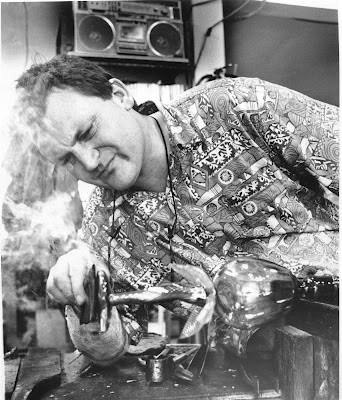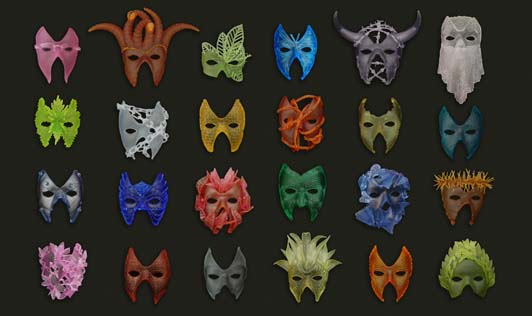
I made use of my newly retired person's new-found leisure time last week to visit Evelyn Dunstan's exhibition
Influence at Orexart Gallery in Auckland. This is the first time I have seen a whole exhibition of Evelyn's work (she doesn't often show in New Zealand), and I was just amazed.
Her work is intricate in the extreme, achieving complexities in the form and colour of the glass that boggle the mind. My reaction to the exhibition was a mixture of appreciation of its sheer beauty, with an intellectual curiosity as to how on earth she manages to achieve these forms technically. I know it has to do with sophisticated casting materials, but it has more to do with inspiration, creativity, tenacity, perseverance and sheer hard work.

Eve
lyn's website (http://www.evelyndunstan.co.nz/about/bio/) tells us that she started glass casting in 2003 after 25 years as a graphic artist,
designer and illustrator, combining a full time career with raising 4 children. In 2002 a life-long passion with clay, the need to
develop her own style of art and more family time resulted in the change of
career to a full time sculptural artist setting up a home studio.
Paua 2004 (Stuart Park collection)
After working with
colour all her life, Evelyn discovered in leadlighting the properties of glass, combining colour with light. She followed that with a basic night class in glass casting (2003)
adding to sculptural forms the depth and dimension of glass. In 2004 I went to an exhibition at Uxbridge in Howick of work by the students of that course and was delighted to purchase for my collection what Evelyn tells me was the first piece of glass that she sold. The way she had incorporated colour into the simple, naturalistic form of the paua attracted me to this work.
After continuing to experiment on her own, Evelyn undertook further training at ArtStation in Auckland in 2004. It must have been a good course, since she had two works selected as finalists for the Australia - New Zealand Ranamok Prize in 2005, another two finalists in 2006, and then won the Ranamok Prize in 2007 with the remarkable Ngahere Karauna (Forest Crown) (http://www.ranamok.com/2007_detail_pages/Dunstan.htm).
That basic crown form has continued to provide a basis for some of her work, there being a variety of karauna in the Orexart show. Two of them (including the one shown above) were entitled Te Turituri, the threat. By chance Evelyn was in the gallery when I visited, so I asked her about that title. She explained that the beautiful convolvulus, with its intricate intertwined vines she captures so well is a significant threat in our gardens and bush. The mix of beauty and danger is an enduring message in art, it seems to me.
The exhibition also included several of Evelyn's remarkable masks, reminiscent of Venetian Carnevale masks, but with a variety of Maori and Pacific cultural references, as well as European ones. Evelyn's installation of 24 masks Transparent Illusions was one of her two finalist works at Ranamok 2010, and won the People's Choice award that year.
I didn't see it in Canberra, but it was included as a complete installation in
Influence at Orexart, a real bonus.












